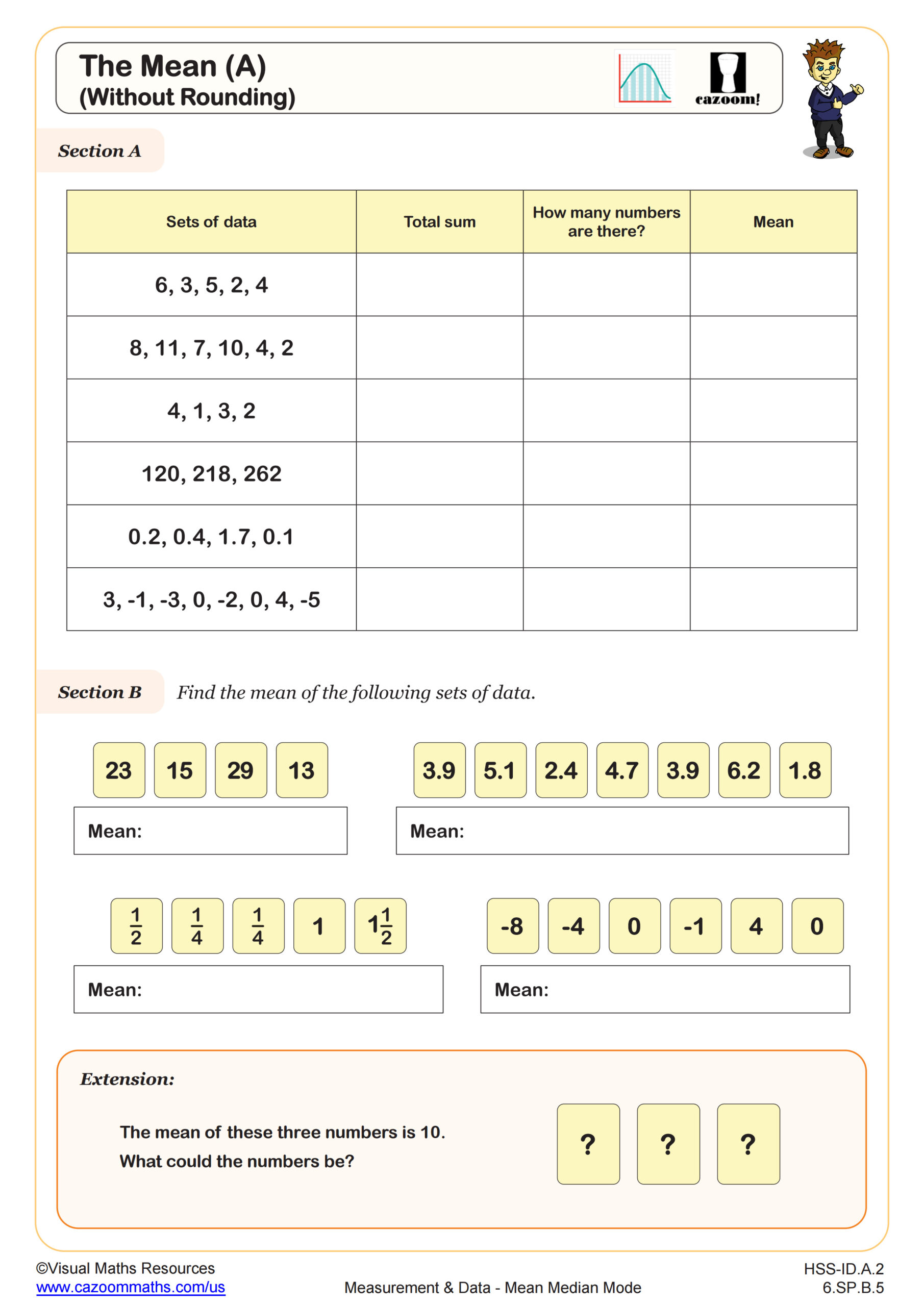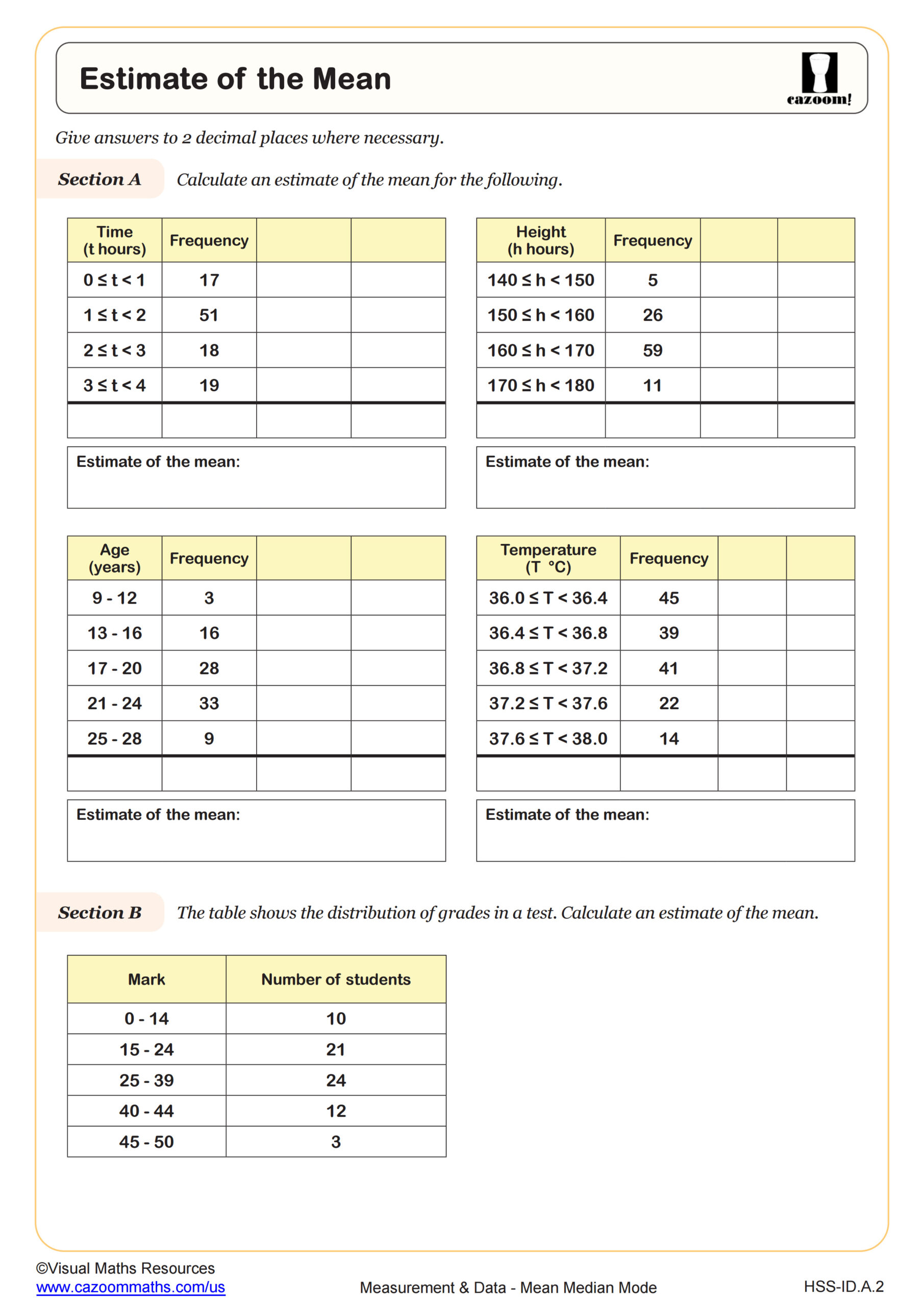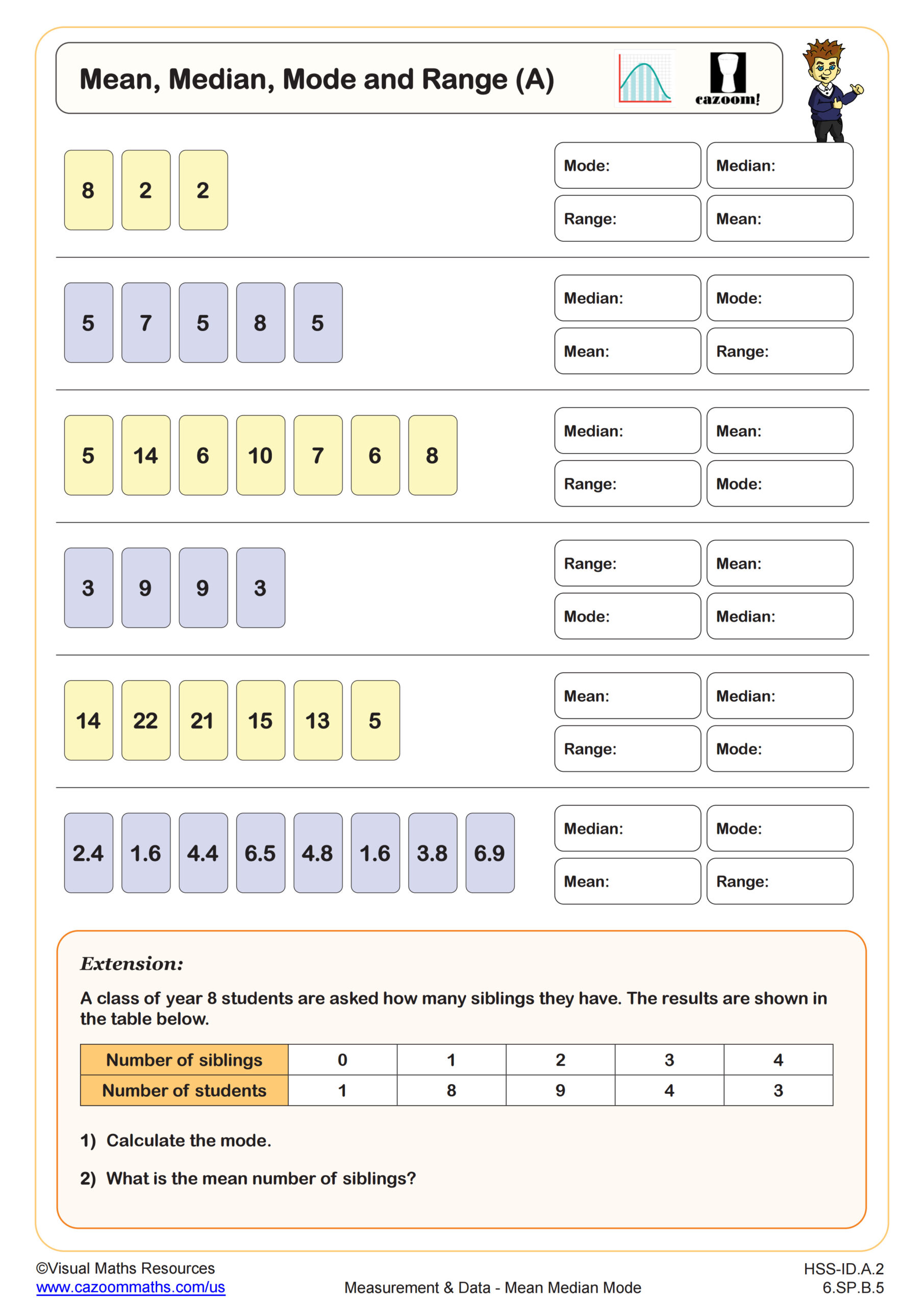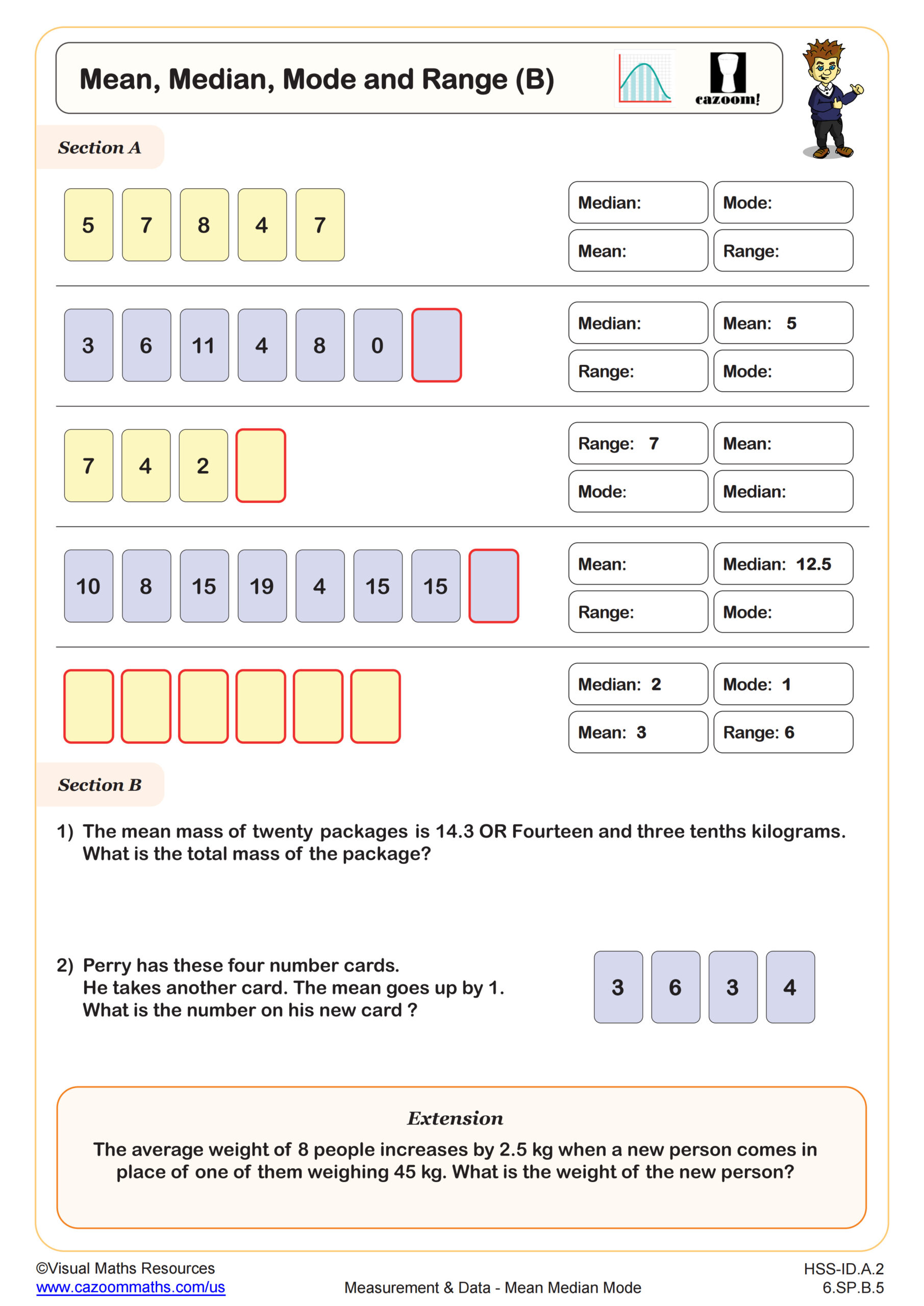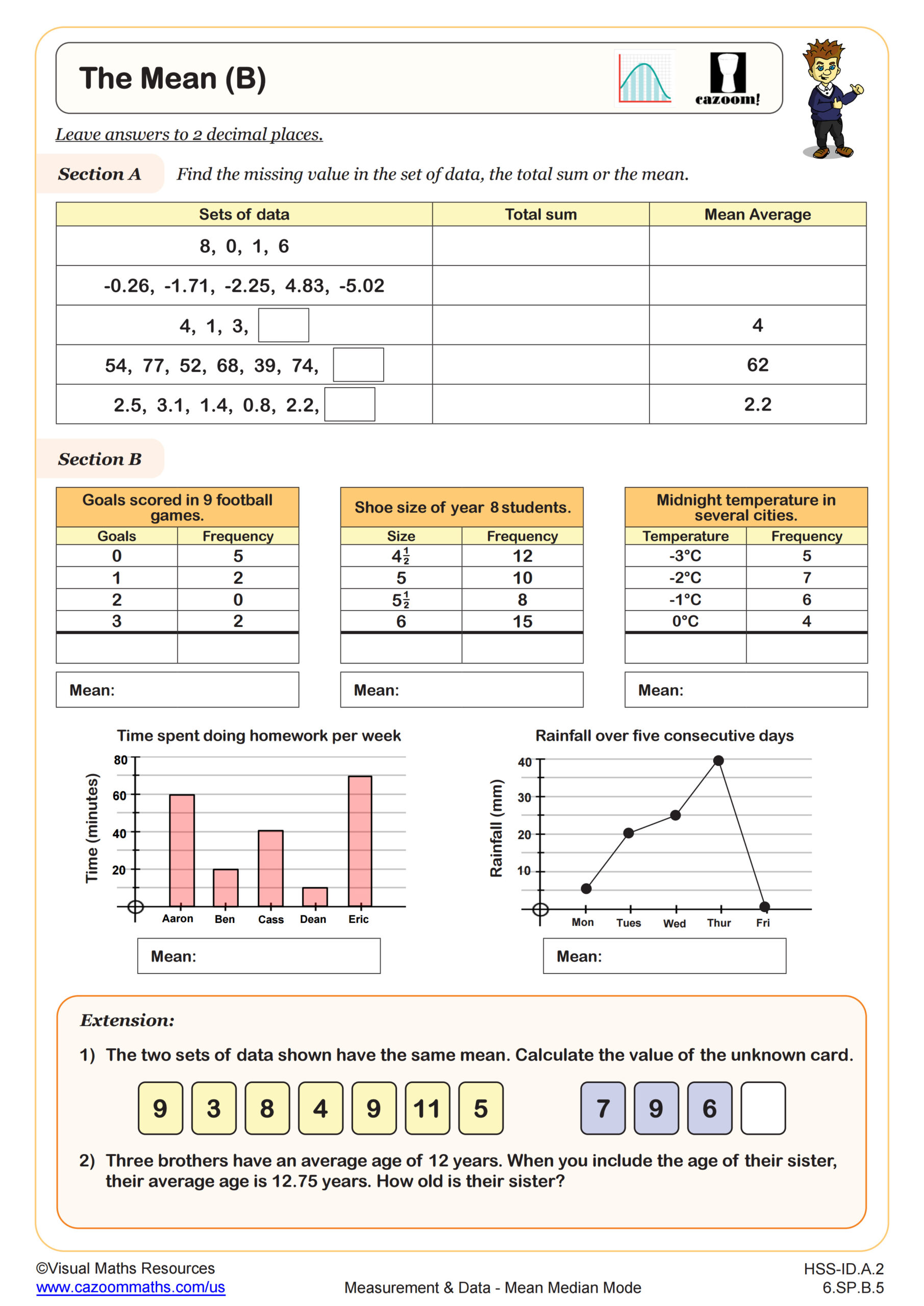Loading...
Back to:
The Mean (A) WORKSHEET
Suitable for Grades: 6th Grade, Algebra I
CCSS: 6.SP.B.5, HSS.ID.A.2
CCSS Description: Summarize numerical data sets in relation to their context, such as by: a. Reporting the number of observations. b. Describing the nature of the attribute under investigation, including how it was measured and its units of measurement. c. Giving quantitative measures of center (median and/or mean) and variability (interquartile range and/or mean absolute deviation), as well as describing any overall pattern and any striking deviations from the overall pattern with reference to the context in which the data were gathered. d. Relating the choice of measures of center and variability to the shape of the data distribution and the context in which the data were gathered.
Use statistics appropriate to the shape of the data distribution to compare center (median, mean) and spread (interquartile range, standard deviation) of two or more different data sets.
Use statistics appropriate to the shape of the data distribution to compare center (median, mean) and spread (interquartile range, standard deviation) of two or more different data sets.
The Mean (A) WORKSHEET DESCRIPTION
This worksheet gives practice in finding the mean from lists of discrete data. Section A scaffolds the process by presenting a table with columns titled “total sum”, “how many numbers are there?” and “mean average”. Section B removes the scaffolding, but provides lists including decimals, fractions, and negative numbers. An extension question asks for possible values for a given mean.
